 By Pepper Parr
By Pepper Parr
September 6, 2016
BURLINGTON, ON
There was an announcement last week that GE Canada is going to build a “Brilliant Factory” in Welland that is expected to employ 220 people and make Welland a hub of advanced manufacturing.
The provincial government was deeply involved in bringing this about; Ontario helped secure this project by providing a single point of contact for GE when the company was deciding where in Canada to make this major investment.
Other companies will benefit from the same service model when the province launches the Strategic Investments Office (SIO) this fall. The SIO will provide companies looking to invest in Ontario a one-window approach, offering a seamless range of services such as help selecting a suitable site, training workers, and fast-tracking provincial and municipal permits and licences.
Frank McKeowan, the Executive Director of Burlington’s Economic Development Corporation, is well aware of the need for tighter co-ordination between different levels of government to attract the jobs he wants to see in Burlington.

Halton Region crest: their economic development mandate doesn’t include Hamilton – which is where Burlington wants to be attached to.
John Davidson, Director of Economic Development at the Region of Halton fully understands the problem – and he is working his way around the problem he is faced with.
Halton Region is tied in tightly with the GTA when it comes to economic development. The problem for the Region is that the boundary he works within does not include Hamilton.
And for Burlington it is becoming increasingly clear that our economic fortunes are tied to Hamilton rather than the Greater Toronto Area.
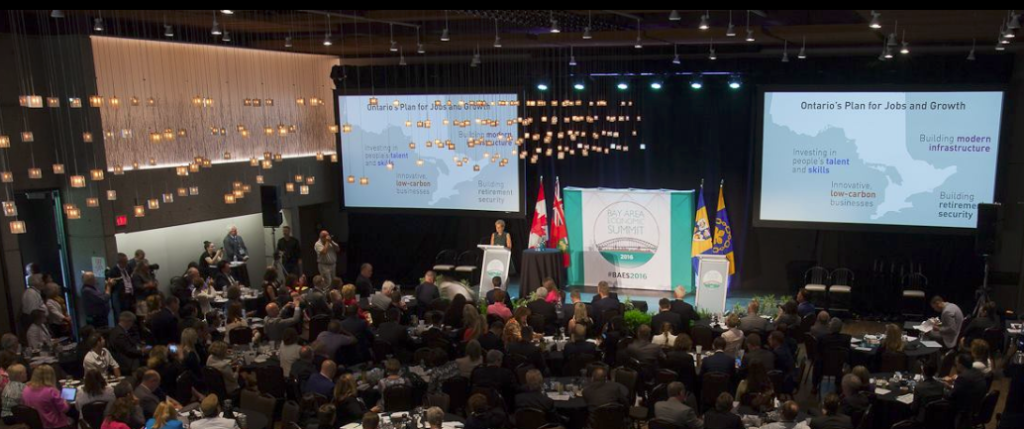
Premier Kathleen Wynne telling the Bay Area Economic summit that she likes what she is hearing.
The Bay Area Economic Summit that took place last June made it pretty clear that Burlington wants to hitch its wagon to the Hamilton engine.
Many feel this is the smartest thing Burlington can do – but what does John Davidson do when his economic development mandate and boundary ends at the border between Hamilton and Burlington?
David A. Wolfe, Co-Director, Innovation Policy Lab, Munk School of Global Affairs, University of Toronto, suggested to the Bay Area Economic Summit last June that there were some significant governance issues to be resolved before Hamilton could reach its full potential.
Wolfe introduced an issue that many had not seriously considered – which was – how do we organize ourselves to accommodate the wonderful opportunity before us.
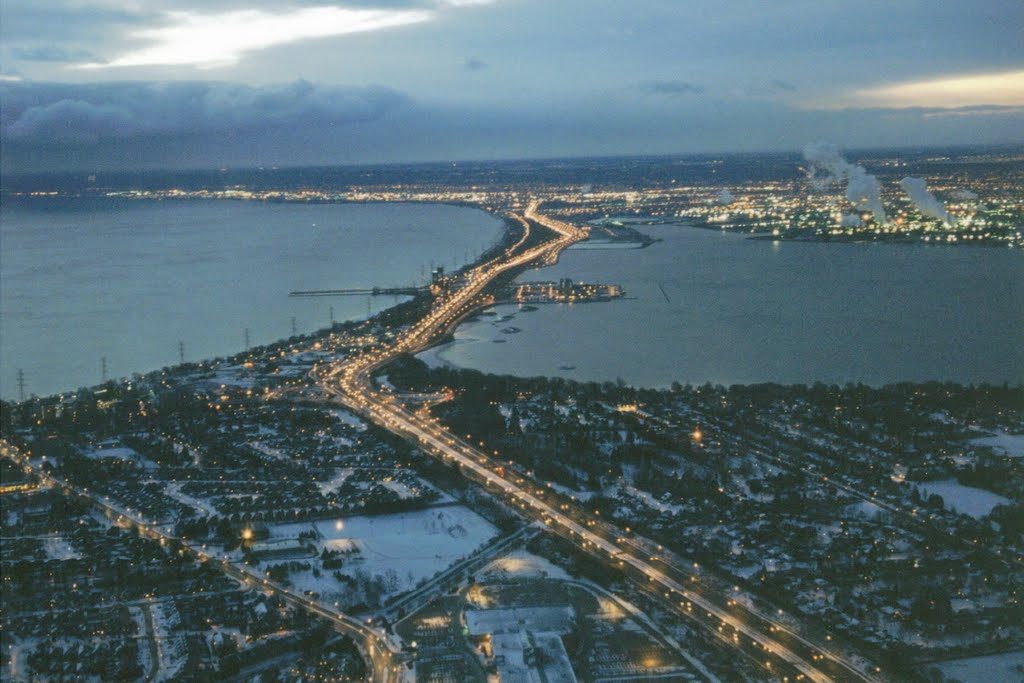
Is Burlington going to be attached economically to Hamilton’s hip?
He suggested that the municipal structure doesn’t work for economic development – those boundaries that demark the borders of a municipality are not respected by the commercial sector – dollars flow to where the return is the highest.
Burlington has an economic development corporation that, so far, hasn’t managed to deliver much in the way of value. The team in place now has a stronger mandate and a clearer objective – they just haven’t been able to deliver on it. No one has been able to say quite why – there is a reason – it just isn’t evident yet.
The creation of the Bay Area as an economic unity was promoted in Burlington by Ward 1 Councillor Rick Craven who brought it up at a city council meeting some time ago. Then the Burlington Chamber of Commerce joined forces with the Hamilton Chamber of Commerce to think about how this could be made to happen.
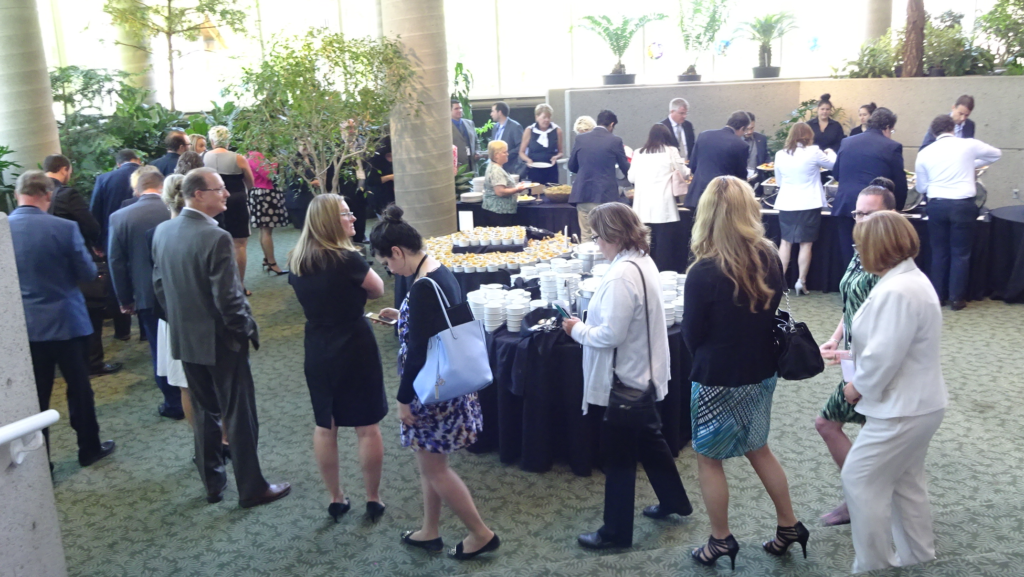
The Bay Area Economic Summit attracted a healthy crowd – lunch time.
That brought about the Bay Area Economic Summit – which was the first direct, detailed and organized look at the problem and the opportunity. It is too early to tell if anything is going to come out of that first meeting.
Wolfe and Dr. Puri were speakers at that conference where their question was – what can Hamilton do to improve its economic prospects?
Wolfe pointed to some of the governance issues that have to be overcome. Innovation and research are concentrated – “being there” matters he said.
We are now a knowledge economy he added; knowledge is plentiful but access to knowledge is critical for its exploitation. Cities are driving change and urban cores are key to the knowledge economy
Does Ontario and the GTHA currently have a unique opportunity to capitalize on the potential for a major regional hub? What can we do to seize the opportunity?
Ontario already has its own large technology hub; it stretches from the east end of Toronto to KW & Hamilton down to Niagara region.
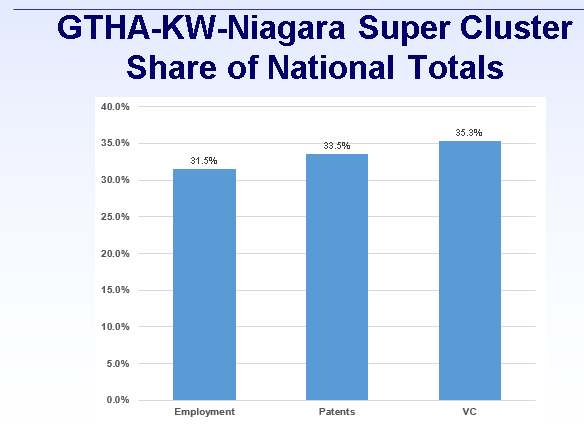
Hamilton – Burlington would like to be able to create an economic hub that produces numbers like this.
GTA/KW/Bay Area triangle has everything needed to succeed, except appropriate governance institutions. There are 10 Universities, 12 Academic Hospitals, 9 Institutes of Technology and Colleges, over 300 Research Institutes, 325,000 Full-Time Students, 85,000 Graduating Students per Year and 11,000 Faculty Members.
Wolfe also points to what the Burlington – Hamilton community can do now to become a vital extension to what now exists in Kitchener Waterloo.
Facilitate the exchange of information and technology
Foster cooperation & coordination in region
Enhance civic capital & improve competitiveness by:
Identifying common strengths
Developing common agenda
CEO’s of Hamilton is good example of collaborative institution
Draw upon civic capital created by these institutions
Generate trust by engaging key social partners in ‘talk’
Build a set of shared expectations
Create a regional vision & strategy
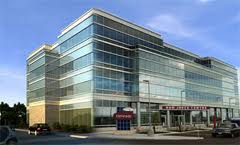
The DeGroote School of Business was touted as a possible location for an Advanced Manufacturing research institute – that one got away on us.
Wolfe told his audience that innovation and research are concentrated and that ‘being there’ matters. While the bulk of the McMaster campus is in Hamilton, the De Groote School of Business is in Burlington. Wolfe makes the point that we are now a knowledge economy and that knowledge is plentiful but that access to knowledge is critical for its exploitation.
Cities are driving change explains Wolfe and urban cores have become the key to the knowledge economy. The challenge he maintains is to transform the rustbelt to “brainbelts”.
Wolfe said “Knowledge is ‘sticky’ and firms located close to research centres benefit disproportionately from research results; there are strong geographic spillovers between public research centres and industrial research and development.
Dr. Ishwar Puri – Dean of Engineering at McMaster made the point that innovation matters but that it is misleading to think that innovation is all about business – “social innovation is important too, he said.
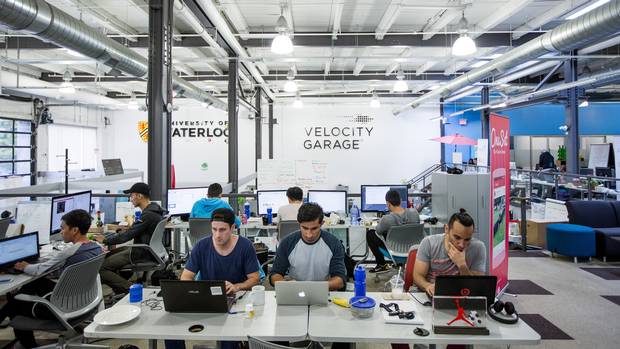
Burlington would love to see something like this within the city boundaries – high tech jobs.
Innovation is a tool for growth – but also a mechanism by which we can address grand challenges like infrastructure, inequity, disease and healthcare.
Dr. Puri said a regional system needs three fundamentals
1) Technological know-how – which means social know-how – technology and society are intimately connected
2) Good business/social climate
3) Collaboration
With these come three requirements:
1) Policies/instruments that allow you to innovate. Policies help harness potential
2) Public-private partnerships between key regional players
3) Innovation is a key driver of regional growth/competitiveness
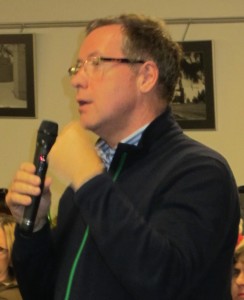
Frank McKeown, former Chief of Staff to Mayor Rick Goldring, now Executive Director of the Burlington Economic Development Corporation. Going in the right direction – just not very quickly.
He went on to say that these three need to be aligned with a brand that clearly identifies the region. Burlington doesn’t have that kind of identity. At a city Committee of the Whole meeting 18 months ago participants were talking about Burlington being a city with a growing seniors population. McKeown reminded them that Burlington needed to be seen as a place for people who were developing careers with strong business operations and not be seen as a senior’s destination – it was clear that Burlington had yet to create its identity.
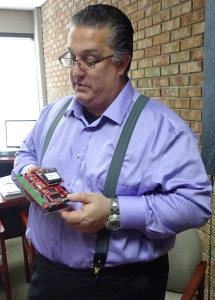
Memex’s Dave McPhail with a version of their Merlin product – a software hardware combination that captures data on the plant for and puts it in front of management – instantly.
We don’t hear all that much about R&D in Burlington but there are several firms deeply immersed in the field and making significant changes. Memex is in the business of helping manufacturers capture data on the plant floor and giving management a real time look at what is happening in their plants which allows them to make changes instantly and not have to wait for a report the next day. Memex reports number like 42% improvement in machine utilization, 100 hours reduction in operator overtime per month, 400 hours per month decrease in previously outsourced work, all in the first 5, in their case studies.
The Thomson Group has been doing some superb work with polymers and have a system of propeller shafts that prevent oil leakage – their product is used around the world.
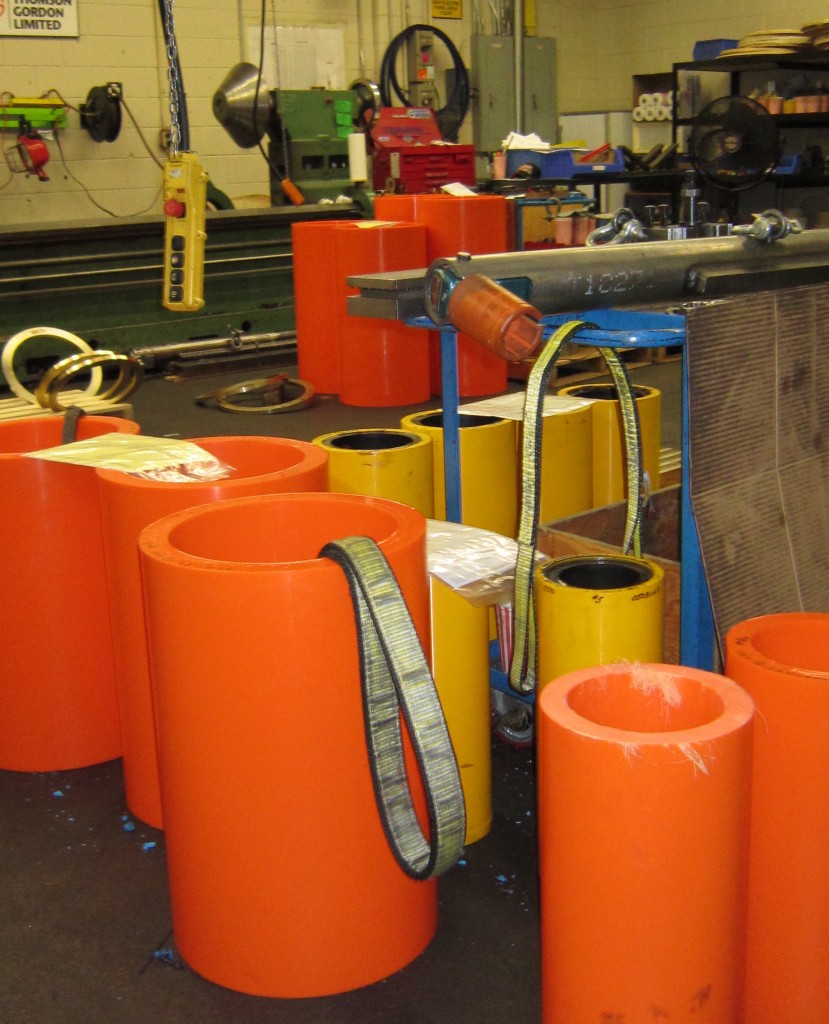
Thordon Bearings, a polymer technology company with a product sold around the world.
McKeown has been working with McMaster and the Fraunhofer Group to set up a research operation for Advanced Manufacturing studies. There were plans (a wish is perhaps a better word) for an actual campus next to the south Service Road DeGroote School of Business facility but that hasn’t gotten very far – that was touted at the same time our economic development people were talking in terms of 20,000 new jobs for the city.
Fraunhofer, headquartered in Munich, is Europe’s largest organization for applied research. They operate 67 institutes and research units in Germany. Fraunhofer has established subsidiaries and representative offices in Europe, North and South America, and Asia. They have a working force of more than 23,000 employees. Their research budget in 2013 was C$2.8 billion.
Fraunhofer has committed to a 20,000 sq. ft. state-of-the-art research facility, slated to open at McMaster Innovation Park in 2017. The project Centre for Biomedical Engineering and Advanced Manufacturing will both be at McMaster University.
Proximity facilitates knowledge sharing and stimulates localized learning, which is a large part of the reason Frank McKeown worked as hard as he did to get Fraunhofer onside.
Creating those hubs or triangles is not easy; the Hamilton/Burlington link has to become what they are we are and not try to be a copy of anyone else.
City-regions are defined as a core city linked by functional ties to a hinterland where economic boundaries rarely coincide with political ones. City-regions are sites for innovation they act as repositories of leading edge knowledge for activities in which they are specialized.
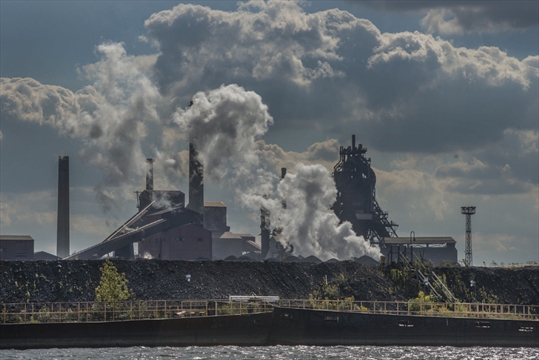
Hamilton was once a great steel town that provided thousands of job for both Hamilton and Burlington – other countries with lower wage rates took much of that business away from the area.
Hamilton was once a major steel city. Other countries with lower labour costs took that away from the “hammer”. There is depth in steel, it is part of Hamilton’s DNA. And there is a tightly integrated core group of corporations that support the steel industry. Can steel redevelop itself and be part of putting all that they collectively know to profitable use? It is a challenge yet to be defined.
The fact that the current owners of the steel companies are looking for a way to get out of the business they are in, and shed some pension responsibilities while they are at it, doesn’t take away from the talent the work force has.
The Hamilton Port Authority has begun to accommodate other industries. G3Canada Ltd., located on Eastport Drive at Pier 26 has a $50 million terminal development which will give Ontario farmers more choice in exporting their grain to global markets. Construction of the new terminal has already started, and is expected to be complete in time for the 2017 harvest season.
The investment at the Port of Hamilton as part of the G3 vision to create a coast-to-coast Canadian grain enterprise,” said Karl Gerrand, CEO, G3 Canada Ltd. “Grain exports have been increasing for some time now. They look forward to expanding their relationship with farmers in the province to establish G3 as the partner of choice in marketing their grain.”
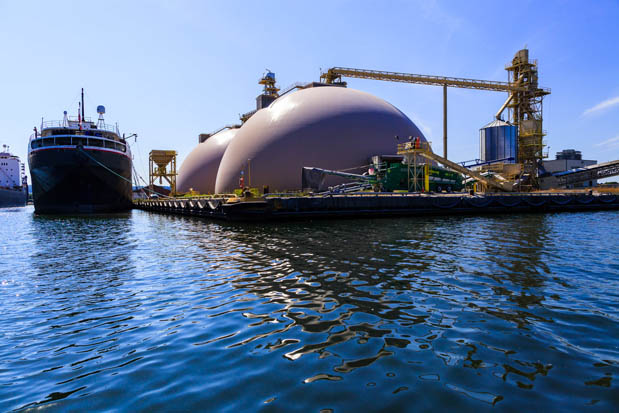
A Parrish and Heimbecker storage facility in Hamilton harbour.
Hamilton Port Authority welcomed a new flour mill to be constructed by Parrish & Heimbecker Ltd. The mill will be located on Pier 10 adjacent to Parrish & Heimbecker’s existing grain storage and export terminal, which opened in 2011.
The Port of Hamilton is positioning itself to be a primary agri-food gateway to attract higher-order food processing enterprises, like Parrish & Heimbecker’s new flour mill, SucroCan’s sugar refinery and Collective Arts/Nickel Brook’s craft brewery, all established within the last three years.
Boat storage will find itself with less space available which might be tough for the boaters – but that land should have been put to better economic use five years ago.
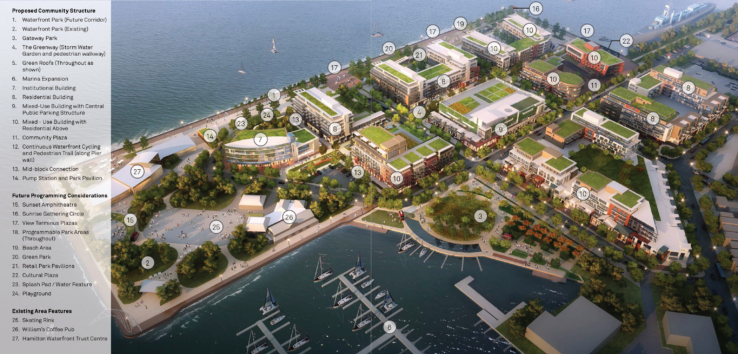
A planned residential community on the edge of Hamilton harbour that will see the disappearance of freight sheds that currently store private boats for the most part.
Hamilton’s plans to develop a vibrant residential community in the Pier 8 area will change the northern part of the city.
The focus to date on creating robust research hubs where the economic spin-offs are measurable has been the KW-GTA corridor. The Bay Area is integrally linked in to both KW & GTA economies said Wolfe. “The reality is that it is a triangle, not a corridor and that the Bay Area is integrally linked in to both KW & GTA economies”. He added, forebodingly that the Bay Area is in danger of being left behind on both the branding and governance fronts.

David Wolfe argues that there is an opportunity for the corridor that runs from the GTA could become a triangle that includes Burlington-Hamilton.
Burlington’s economic development is evolving; a work in progress. There hasn’t been much to report other than Burlington is the #1 Mid Size city in Canada – which is rather pathetic.
All the pieces exist for a burst of research and the economic development that can follow. The challenge for Burlington is to become a significant part of the changes that Hamilton is going through as it evolves from an industrial steel town to a community that not only taps into the knowledge economy but becomes a leading participant.
McKeown does point out that corporations rarely back up their bags and move everything to a new location, although that is exactly what International Harvester did with their parts distribution operation that left Burlington for an industrial park in Hamilton.
And those 20,000 jobs touted in 2014 are nowhere in sight.
The Bay Area Economic Summit is hopefully a first solid step to developing the momentum badly needed.



















Great article! Very insightful and informative. Well done!
Working with Hamilton in economic development is important. Working with the GTA is equally important. And, increasingly the GTA economic region extends to Waterloo and Niagara. We are in this together in the broader region.